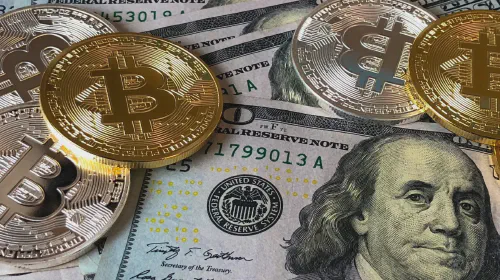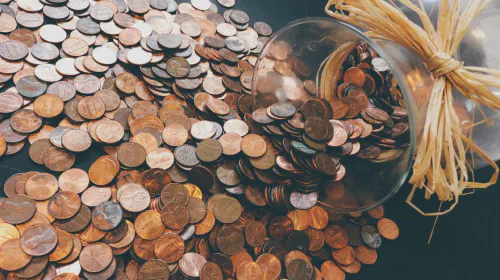What Is Cardano and What Is It Used for?
Salomon Kisters
Aug 15, 2022This post may contain affiliate links. If you use these links to buy something we may earn a commission. Thanks!
If you have been in the crypto space even for a little while, chances are you have come across the name “Cardano” multiple times. Cardano is a proof-of-stake cryptocurrency blockchain with the eighth largest market cap in the entire industry.
But what is it that makes Cardano so unique? How is it different from the rest of the blockchain ecosystem? What is Cardano made for?
These are the questions that we are going to be answering in this article today.
What is Cardano?
Cardano is an open-sourced and decentralized blockchain designed to enable peer-to-peer transactions without involving intermediaries like banks. The name, Cardano, is a homage to an Italian polymath, Gerolamo Cardano, who is regarded as one of the most influential mathematicians of the Renaissance era.
Open-source means that the blockchain code is public, and anyone can access it. Decentralized refers to the decision-making and governance policies, i.e., no single centralized entity controls the network ecosystem.
In fact, the blockchain is run by its users through community voting.
Some of the most important tenets behind Cardano’s development include scalability, sustainability, interoperability, decentralization, transparency, and ecosystem efficiency.
What Makes Cardano Different?
Charles Hockinson – creator of the Cardano project – regards Cardano as the third generation blockchain, Bitcoin and Ethereum being first and second generations, respectively. The earlier two generations suffered from the blockchain trilemma.
Blockchain trilemma refers to the inability of most blockchain ecosystems to maintain decentralization, security, and scalability simultaneously. However, Cardano confidently believes it can effectively solve this trilemma without compromising on any of the three aspects.
Interestingly enough, unlike most blockchain ecosystems, no whitepaper was ever published for the project. Cardano’s data-driven and academic development approach is another factor that sets it apart from the rest of the blockchain projects.
Instead of adopting a fast-moving approach and improvising as it goes, papers outlining the development and future plans for the network are made publicly available. Expert engineers, computer scientists, and developers from all around the world then review and analyze these papers. In this way, structured and peer-reviewed research is done before implementing any development update on the Cardano network.
How was Cardano Founded?
Cardano was created by one of Ethereum’s co-founders, Charles Hoskinson. Hoskinson left the Ethereum development team after a dispute with the creator Vitalik Buterin. He wanted to change the organization into a for-profit entity, while Buterin wanted to keep it running as a non-profit.
After resigning, Hoskinson co-founded a blockchain infrastructure research and design company, Input Output, in 2015. It is one of the leading organizations behind the development of Cardano.
The Cardano project raised around $62 million in ICOs from 2015 to 2017. The mainnet was launched in September 2017, and the cryptocurrency concluded the year with a market cap of almost $18 billion. However, the blockchain is still in its development stages.
Following are the three major organizations behind the Cardano project.
Cardano Foundation
The Cardano Foundation is an independent non-profit cryptocurrency organization based in Zug, Switzerland. As the owner of the brand, the primary purpose of the organization is to oversee and supervise the development of the Cardano blockchain and ecosystem. It also works to drive adoption and establish partnerships in order to grow the Cardano community.
IOHK - Input Output Hong Kong
IOHK is a technology and engineering company founded by Charles Hoskinson and Jeremy Wood that builds blockchains for institutions, enterprises, and government entities.
The company is responsible for designing, building, and maintaining the Cardano network. It’s a fully-decentralized company with a team composed of members from all over the world. IOHK also researches and works to promote academic blockchain study.
Emurgo
Emurgo is the sister company of IOHK which encourages and incubates commercial opportunities in the Cardano ecosystem. Basically, it is the for-profit arm of Cardano and works to drive adoption through capital ventures.
The company has several offices across the USA, Singapore, India, Japan, and Indonesia. It supports start-ups in several industry sectors, including financial services, healthcare, supply chain, retail, the public sector, and IoT.
What is ADA?
ADA is the native coin of the Cardano blockchain, used to pay transaction fees and support the governance model of the ecosystem. ADA holders can participate in the network by staking their tokens to become validators and earn a reward.
ADA is named after Ada Lovelace – a British mathematician and daughter of the famous poet Lord Byron. She is one of the most influential mathematicians and is now considered one of the first computer programmers in the world. She wrote the first ever algorithm for a machine in 1843. The smallest unit of ADA (0.000001 ADA) is called Lovelace.
Consensus Mechanism
Cardano uses an underlying proof-of-stake mechanism, named Ouroborus Praos, to reach consensus and validate transactions. It is a much more efficient and greener alternative to the proof-of-work model used by Bitcoin and Ethereum.
The PoS mechanism allows Cardano to process around 500 transactions per second without using highly complex computational power. Compare it to Bitcoin or Ethereum, which are limited only to 7 and 25 transactions in this period. You must also note that developers are actively working to increase this speed even more in future updates.
Ouroboros runs the block creation cycle by dividing the time into epochs. Each epoch is further divided into 432,000 slots. A slot is open for one second and an epoch for five days. 21,600 slot leaders are selected for each epoch. These slot leaders are responsible for validating transactions and recording them on the blockchain.
Slot leaders are chosen from staking pools depending on the amount of staked ADA and a random seed. The larger the stake is in a staking pool, the more the chances it is nominated as a slot leader.
Smart Contracts
Cardano is a smart contract programmable blockchain. It is designed to use this technology to its full potential. Smart contracts went live on the Cardano blockchain on September 12, 2021, after the Alonza hard fork.
Cardano’s smart contract support allows the platform to create automatic agreements that do not require any intermediaries for execution. Using this technology, participants can easily input any particular condition that needs to be met, and the blockchain will automatically execute without the user’s constant involvement.
Decentralized Applications (DApps)
DApps is one of the features made possible after the launch of smart contracts on the Cardano blockchain. DApps are just like regular computer programs created for a specific purpose. A DApp is usually open-sourced and free from the authority of any single centralized entity. DApps also allow users to interact with the blockchain network.
The network currently hosts several dozen DApp projects while more than 1,000 projects are under development and will be launched soon. These DApps originate from various sectors, including DeFi, wallets, DEXs, NFT marketplaces, metaverses, games, and more.
Following are some of the most popular DApps currently running on the Cardano blockchain:
- Ray Network
- SundaeSwap
- MuesliSwap
- ADAX
- MELD
- AdaSwap
- CNFT
- JPG Store
- Cardahub
- Tokhun
- Galaxy of Art
Cardano Tokenomics
Like Bitcoin, Cardano is a deflationary cryptocurrency, meaning that there is a fixed maximum supply. The maximum supply is capped at 45 billion ADA, with a total circulating supply of 33.75 billion ADA, as of August 2022.
In multiple ICO sales from September 2015 to February 2017, a total of 25,927,070,538 ADA was sold to early investors. Only 5,185,414,108 ADA was distributed between the three founding organizations, making up almost 11.5% of the maximum supply.
Hence, at the time of the official launch, about 31,112,484,646 ADA tokens were available, with a total of 13,887,515,354 ADA set as the network’s reserve to be distributed over time.
- Initial public sales: 25,927,070,538 ADA (57.6%)
- Reserves: 13,887,515,354 ADA (30.9%)
- Cardano Foundation holdings: 648,176,761 ADA (1.4%)
- Emurgo holdings: 2,074,165,644 ADA (4.6%)
- IOHK holdings: 2,463,071,701 ADA (5.5%)
The decision to allocate just 11.5% of the maximum supply to the insiders sets Cardano apart from its competitive projects like Solana, Flow, and Avalanche, which distribute almost 40% within the founding organizations.
What Future Holds for Cardano?
Cardano’s future depends on the project’s performance and upcoming milestones in the next couple of years. It also depends on how efficiently the development team can fulfill its promises according to the roadmap.
Although Cardano currently has a market cap of only $16.8 billion after the recent widespread crypto crash, the fact that it reached $77 billion in May 2021 solidifies its position. It is a testament to the retail and institutional interest in the project.
Moreover, despite the poor performance on the price chart over the last few months, Cardano continues to grow and expand as more institutions realize its potential and accumulate cryptocurrency.
If the Cardano development team can keep the pace of building the ecosystem and community, we can very comfortably say that it is one of the projects that are here to stay.
Stay informed with the latest insights in Crypto, Blockchain, and Cyber-Security! Subscribe to our newsletter now to receive exclusive updates, expert analyses, and current developments directly to your inbox. Don't miss the opportunity to expand your knowledge and stay up-to-date.
Love what you're reading? Subscribe for top stories in Crypto, Blockchain, and Cyber-Security. Stay informed with exclusive updates.
Please note that the Content may have been generated with the Help of AI. The editorial content of OriginStamp AG does not constitute a recommendation for investment or purchase advice. In principle, an investment can also lead to a total loss. Therefore, please seek advice before making an investment decision.

What Are Algorithmic Stablecoins?
Algorithmic stablecoins are backed by an on-chain protocol that pegs their value to a supply/demand ratio maintained by an algorithm. Let's have a closer look.

What Is DAI Coin and Why Is It Special?
Many stablecoins are pegged to a currency like USD, usually in a 1:1 ratio. An example is the DAI coin, which we are covering in this article.

Polkadot: Decentralized Web Protocol and Advanced Features Explained
Learn about Polkadot, a decentralized web protocol and blockchain with advanced features designed by Gavin Wood. Explore how Polkadot works and its unique advantages.
Protect your documents
Your gateway to unforgeable data. Imprint the authenticity of your information with our blockchain timestamp